Ramesh, tell us a little about yourself ...
Sou Ramesh Suthar, a self-taught artist born in Rajasthan, in India, a state known for its desert landscapes.
Currently residing in Pune, Maharashtra, work as a graphic designer. My hobbies revolve around exploring unknown mountains and seeking serenity outside the city.
My artistic journey stems from a deep connection with nature and the emotions evoked by life’s experiences – joy, sadness, beauty and hardness. I don't consciously plan my art; instead, flows spontaneously. When I open my sketchbook, I start with dots or lines and, slowly, something takes shape on its own.
This process often surprises me, revealing a story linked to an impactful experience from previous days. These creations not only amaze me, but also provide information about the emotions that inspired them.
When your desire to be an artist awakened?
My artistic journey began unexpectedly during a 6th grade science class. The teacher asked us to sketch the life cycle of several animals. Surprisingly, My sketches caught the attention of my classmates and I was soon recognized as an artist at my school. Encouraged by this, I delved deeper into painting and drawing, winning prizes in art competitions.
However, my lack of interest in studies led me to fail 9th grade, much to my father's disappointment. He never supported my passion for art. After this setback, I stayed away from art for two years. It was only in high school, during the 12th year, that I found solace doodling and drawing in my school books, instead of focusing on studies.
Despite my reluctance, my father enrolled me in an architectural institute in Bangalore after high school. It was a period of rebellion for me, embracing a new lifestyle with friends who enjoyed trekking and, eventually, of experimenting with substances like marijuana. This experience changed my perception, unlocking a creative flow I hadn't felt before.
One day, while admiring a friend's artwork, I spontaneously drew a unique figure: a monk with three eyes, long hair and a serene smile. Surprised by the positive reception from friends, I started creating art incessantly – during classes, during breaks and even at night. My college principal appreciated my work and allowed me to display it anywhere on campus.
But in the midst of this newfound passion, my dependence on marijuana increased, leading to intense emotional experiences. I felt an overwhelming connection with nature, feeling the pain and emotions of trees, of the animals and even the souls of the world. It deepened my isolation, making me distance myself from studies again.
Although my college principal tried to motivate me, I ended up giving up and just focusing on my art. Some of my artworks were even stolen by a friend who admired them. This incident took me further into the realm of art. I took an animation course, specializing in graphic design, and I graduated. Now I work as a graphic designer, where my art remains my guide.
Art, for me, It’s not just awakening – it’s connecting with the essence of everything that surrounds us. It's about feeling joy, the pain and all the emotions that define our existence. Art is my enlightenment, illuminating my soul and establishing a deep connection with nature and the beings of the world.
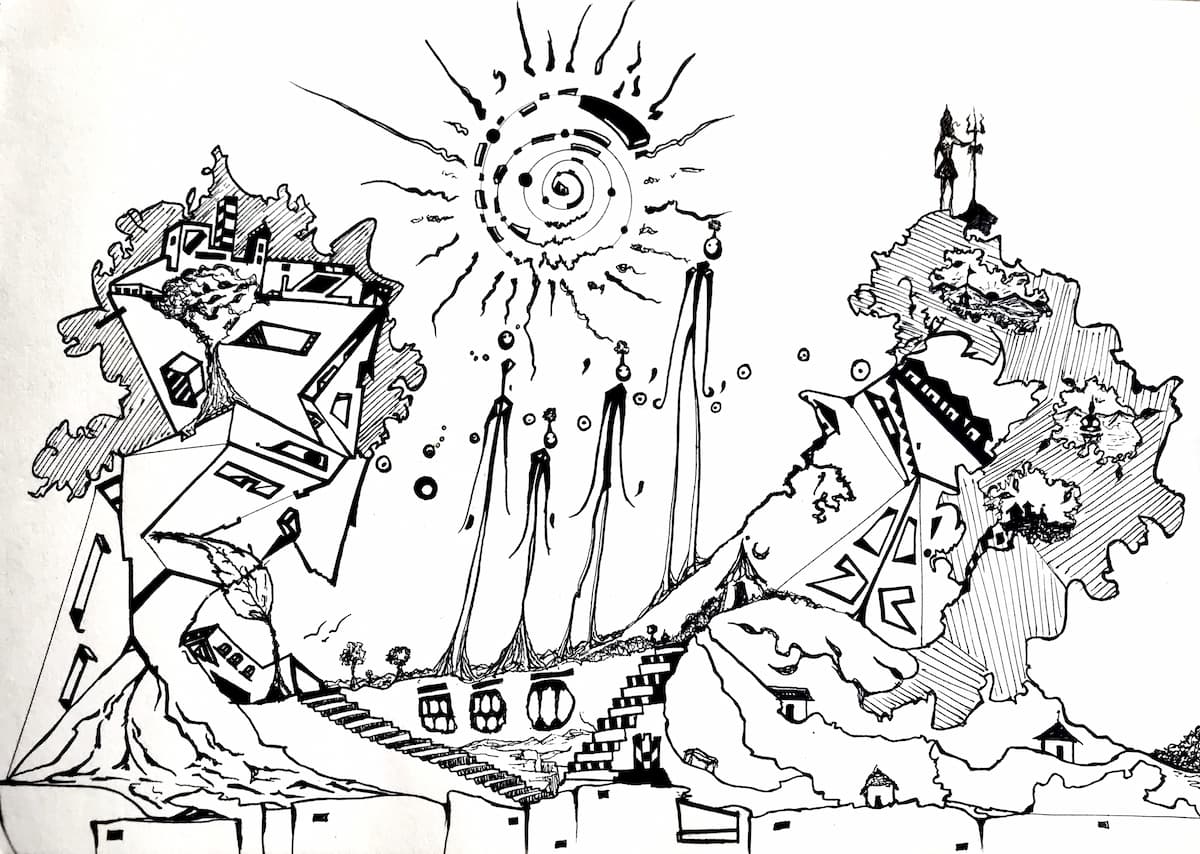

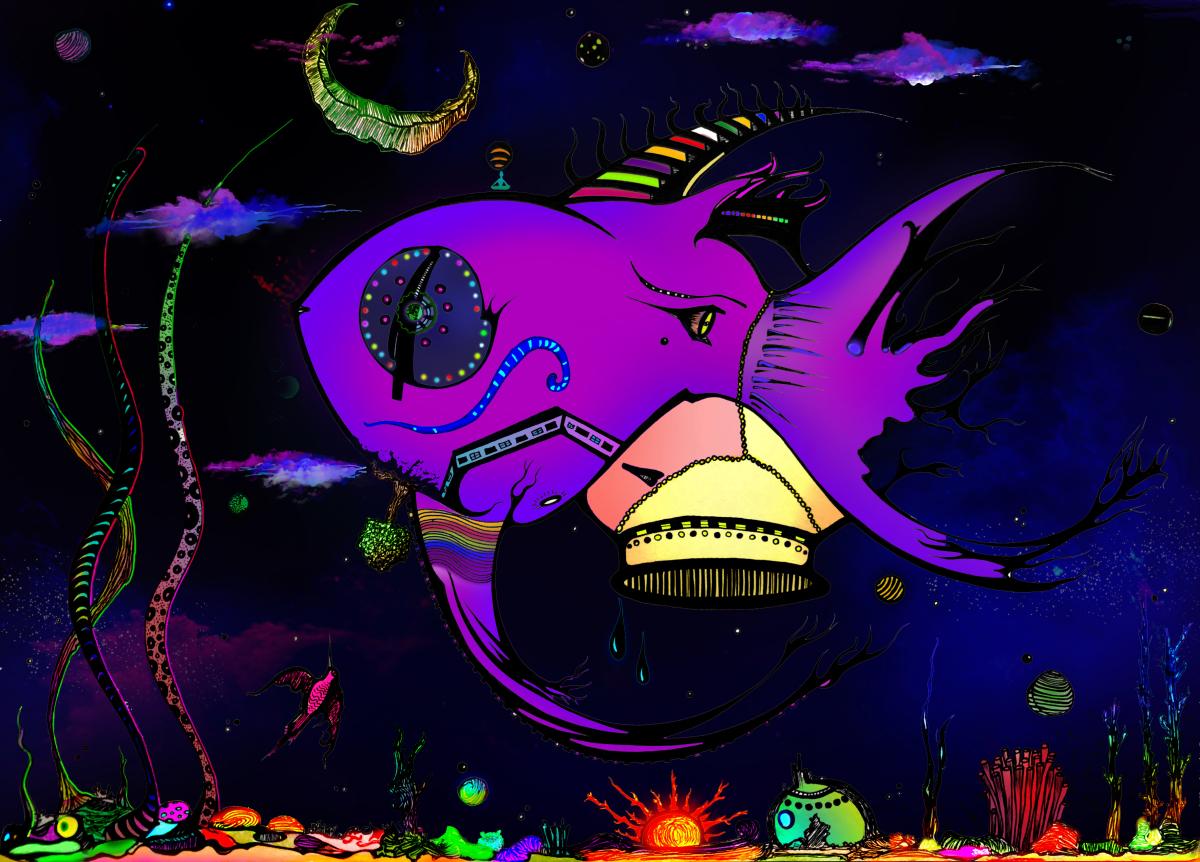
What kind of art do you like best?
As an artist, I've always been cautious about exposing myself to other people's artwork, fearing that it might influence my own creative process. I believed that absorbing too much from others would hinder my ability to create something truly unique. However, fate had a different plan for me.
A friend shared with me some of Salvador Dali's amazing works and I was mesmerized. His art was not just creative; it was a whole universe of surrealism and symbolism that remained in my mind for weeks. Initially, this influx of creative inspiration left me overwhelmed, prompting me to take a break from creating for a while.
Surprisingly, Dali’s art had an unforeseen effect on me – he became my muse, my inspiration. Exploring his extensive collection made me feel an inexplicable connection, almost as if I were him, seeking to give birth to a new artistic style.
I developed a deep admiration for surrealism and symbolism, particularly attracted to Dali's style. However, I am committed to forging my own path and creating original works, rather than replicating or imitating their creations. Dali continues to be a guiding light, a beacon of inspiration on my artistic journey, encouraging me to push the limits of my imagination, staying true to my unique artistic voice.
How did you develop your style (techniques)?
I think the process of developing an art style involves practice and inspiration from the environment. Requires dedication of time, effort and infusion of your soul into the work of art. I shaped my art style by taking inspiration from the textures and patterns of nature.
In addition, my fascination with architecture, particularly for concrete and the different styles of texture, significantly influenced my artistic direction. Although my initial artwork flowed naturally, the intricate details and textures have evolved through deliberate thought and consideration.
I have a thing for straight lines; Practicing this freehand without rulers improved my skills, although I'm still not an expert. Eventually, I realized appreciation for my art, but lacks resonance with some viewers.
To increase your impact, I started coloring my sketches using software like Photoshop. The addition of colors brought depth and vibrancy, enriching the final art. I learned that color greatly impacts the way art is perceived, causing this evolution in my artistic style.
Living from art is possible?
Navigate the world of art, especially in the early stages, presents numerous challenges. I faced obstacles in selling my artwork, despite receiving praise. Many appreciate, but hesitate to buy, often suggesting finding the right platform or stage for my art. In India, a business-oriented mentality prevails, where investments in art, especially on original parts, are limited. Demand leans more towards religious art or printed frames.
Globally, Numerous artists struggle with sales due to fierce competition and diversity of styles. Selling art is an art in itself; involves connecting with the right collectors who appreciate and value your work. Although renowned galleries like Christie’s Auction and Sotheby’s hold exhibitions that sell works of art for millions, the artist's share often remains a small fraction – about 20-25 percent or even less. The main profits go to collectors or investors.
However, There are alternative ways to sell art. Many artists use platforms like Amazon, Flipkart or hold exhibitions, even selling directly to customers through social media platforms. Living exclusively from art is challenging, but not impossible. Artists are resilient; our focus often lies on creation itself, finding contentment in expressing ourselves on screen, instead of focusing solely on monetary gains.
Making a living from art is not easy, but it's totally doable. Many artists survive by selling their pieces, placing orders, teaching, forming teams on projects or diving into related areas, like graphic design. It's all about dedication, persevere through good times and bad, network and find places to showcase and sell your creations. It may take a while to find the balance, but with courage and flexibility, Many artists make a living doing what they love.
What skills are needed today for the artist?
As an artist, I learned that skill in art lies in capturing the emotions of life. It's about combining imagination with concepts, logic and ideas to create something that really speaks to the soul. Communication is very important in this game, as well as knowing how to market and show your work to the world.
Build connections within the artistic community, Partnering with other artists and getting your work noticed by galleries or potential buyers – these are the secret ingredients to success. Staying up to date with new techniques and styles keeps your work fresh and keeps people engaged. Sharing the story and meaning behind your art helps you bond with your audience.
Knowing how to play with colors and use them to attract people is an art in itself. Every little detail in your unique style matters – It’s what gives soul to your work of art.. And let me say, Experimenting is where the magic happens. Sair, observing textures in nature and finding inspiration everywhere – it all fuels that creative fire.
I know, AI-generated art can seem intimidating. But there's something about the raw emotion and depth we put into our handcrafted creations that simply can't be replicated.. AI can try, but fails to capture that unique essence we bring to our work. I think it's cool to explore AI as a tool in our own works of art.
I believe that skills are born from nature and are improved through practice. I realized that skills come from a deep connection with nature and evolve through continuous practice. It's about experimenting, Embrace multiple styles and stay true to your creative core while navigating the new tides of art.
Be adaptable, being willing to learn new things and being open to change are the driving forces behind an artist's growth. It's like a journey: you gather inspiration everywhere, refine it through practice and shape it into something uniquely yours. That’s the beauty of being an artist – the ability to evolve and create something beautiful from each experience., emotion and moment of life.

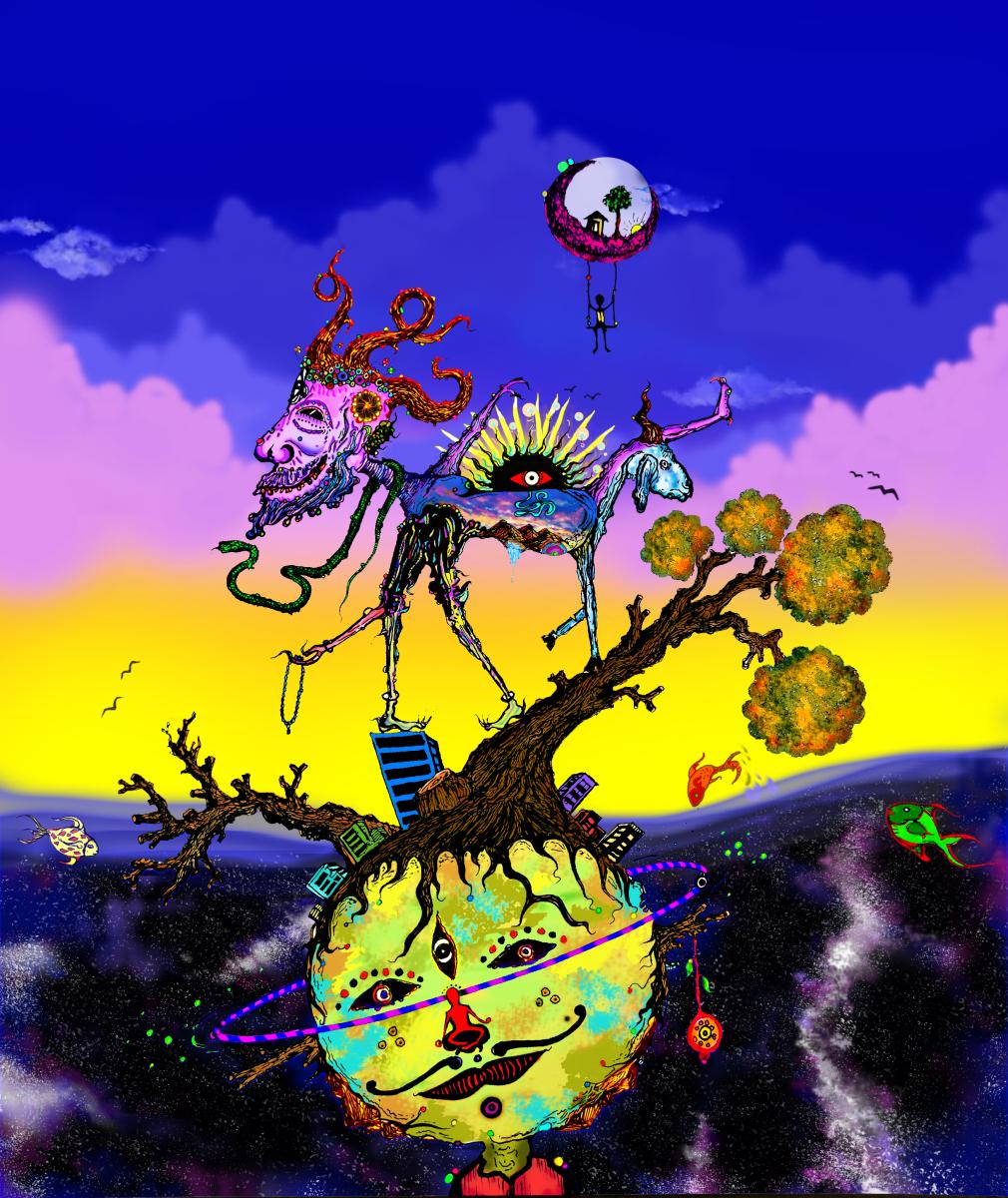
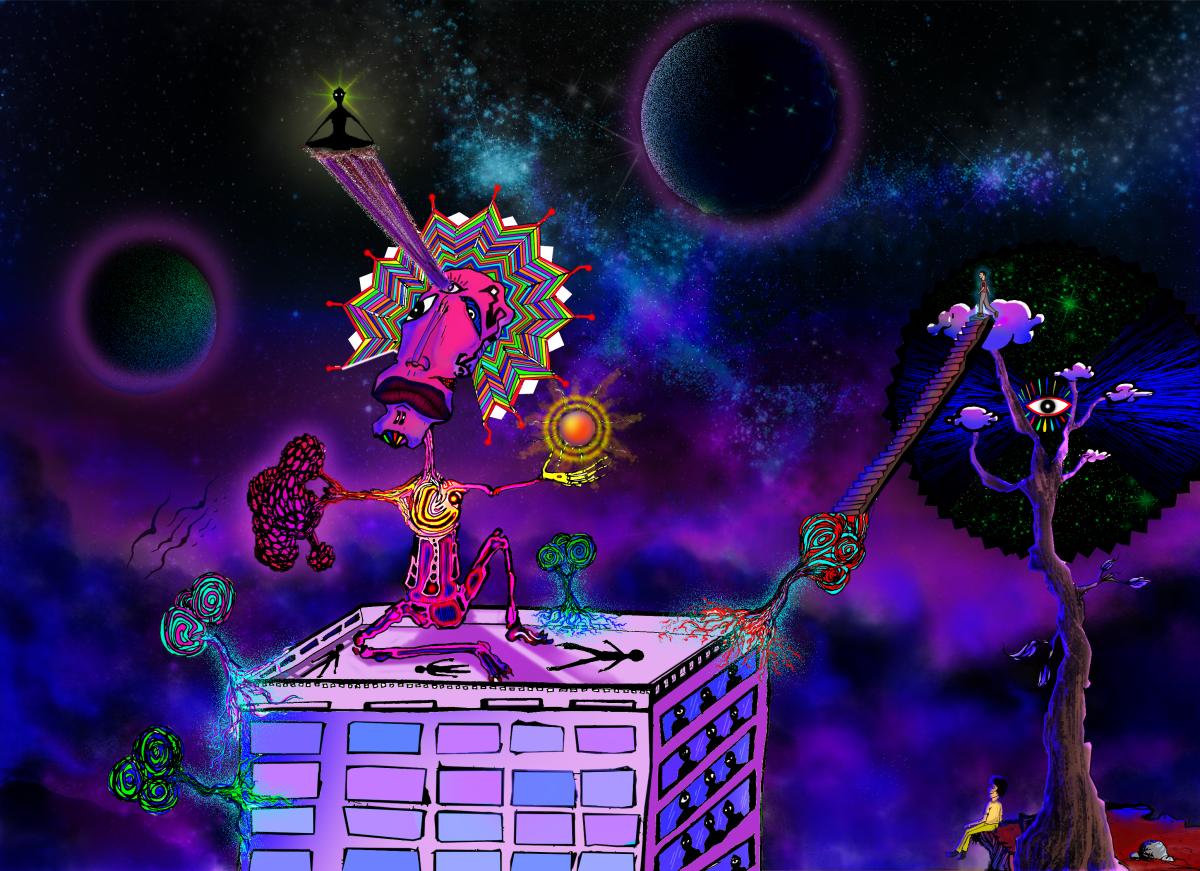
Your inspirations to create a work of art?
My art is inspired by the environment around me – nature in its entirety, from insects to trees, rocks and the essence of every living being. It drives me to deep contemplation, diving into emotions, expressions and essence of everything that exists.
Interestingly, I never looked for inspiration from other artists; instead, the diverse nature of each living being becomes my muse. Your emotions, expressions, movements and even their pain constitute the core of my artistic inspiration.
What art impressed you the most so far??
“The Temptation of Saint Anthony”, by Salvador Dali, left a deep impact on me. There is something about this work of art – especially the way he portrayed the animals, like the elephant and the horse, amidst these intriguing architectural elements.
Once, a friend mentioned a similarity between my work and Dali's, although mine doesn't have vibrant colors. See Dali art, especially those distinctly long legs of the elephant and horse, it really surprised me. It's been years, but these unique characteristics still remain vivid in my memory, inspiring me in ways I never expected.
What are the challenges facing art/artist today??
In the world of art, challenges are everywhere. Finding the right place to display your art can be difficult. There are tribal artists too, But they don't like being famous. They just do it for their culture and happiness.
Real artists? They're not just after money. They create to be happy inside and when someone likes their art it is a different kind of happiness. But some artists are in it for the money, and that's where things get complicated. AI technology is out there and, although it can create, missing that exciting touch that we, humans, we bring to art. It's Exciting and Difficult for Artists to Deal with AI.
After, there's the whole copyright thing. Some artists don't care if their art is used by others, as long as they continue to create. It's as if they have an emotional bond with their work.
But let me say, artists can get really depressed sometimes. They feel everything deeply – the problems of the world, the suffering of animals and all that mess. It's as if their art emerged from these feelings, but this can harm them.
Money is another important thing. It's not easy for artists to show their work in other countries or in fancy galleries because it costs a ton. This financial barrier prevents your art from getting more attention.
So, activate, be a artist – it’s not just about painting or sculpting. It's a whole world of challenges, from royalties and money to deep emotions and technological things. And all these challenges? They are part of what shapes an artist's journey and their art.
Do you always have to be creating or only create at certain times?
I turn to art when I am overwhelmed by emotions – be deep sadness, overwhelming happiness, confusion or frustration. It's like an outlet for my pain and feelings. Sometimes, after a nightmare or witnessing someone suffering, whether human or animal, this emotion infiltrates my art, lasting for days, even when I create days later.
Interestingly, whenever I plan a work of art with a specific concept or idea in mind, It never turns out the way I imagine. Seems to turn into something unexpected or even end up being a bad play. So, I learned to let go of plans and let my art flow naturally from my soul to my hand.
My art sessions are not a daily routine, are more sporadic. I can sit down with a sketchbook once or twice a week, sometimes less frequently, especially when I'm exploring mountains or jungles. It's not a programmed thing; it's more about letting my emotions guide when I create.
Is your work product unique or closely or distantly related to your previous work?
Sign up to receive Event News
and the Universe of Arts first!
My works are usually unique or not, I don't know. However, there are recurring elements – like when I draw human faces, they usually present a side view with similar aspects, like nose, eyes and earrings. Likewise, elements such as trees, mountains, sun and moon appear frequently in my pieces. These recurring elements stem from my deep connection with nature, influenced by my trips to the mountains.
Although I do not deliberately draw connections between my current and previous works, sometimes they reflect similar elements or stories arising from past emotions, although presented in different artistic styles. The process is more of a natural flow of my mind or soul, and I don’t consciously replicate previous work – it’s more about expressing the emotions and connections I feel in the moment.
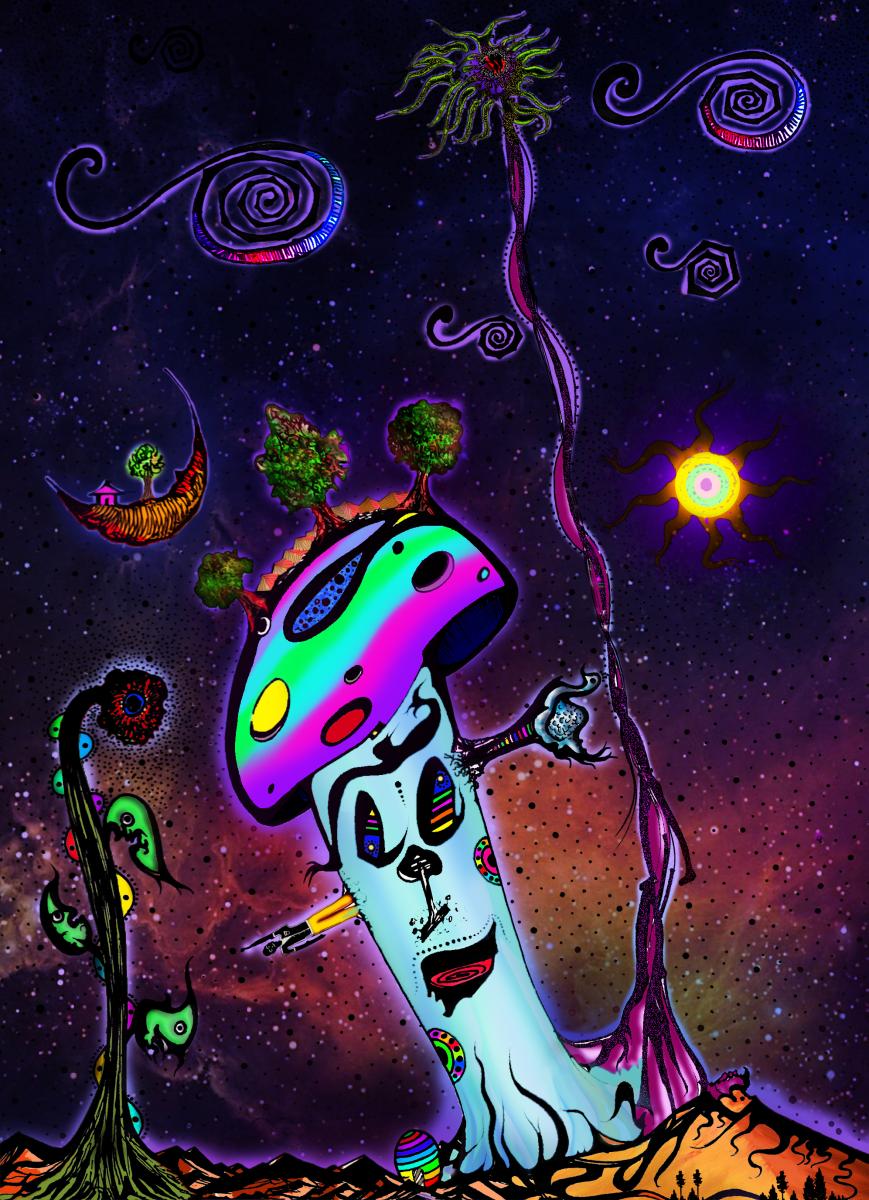
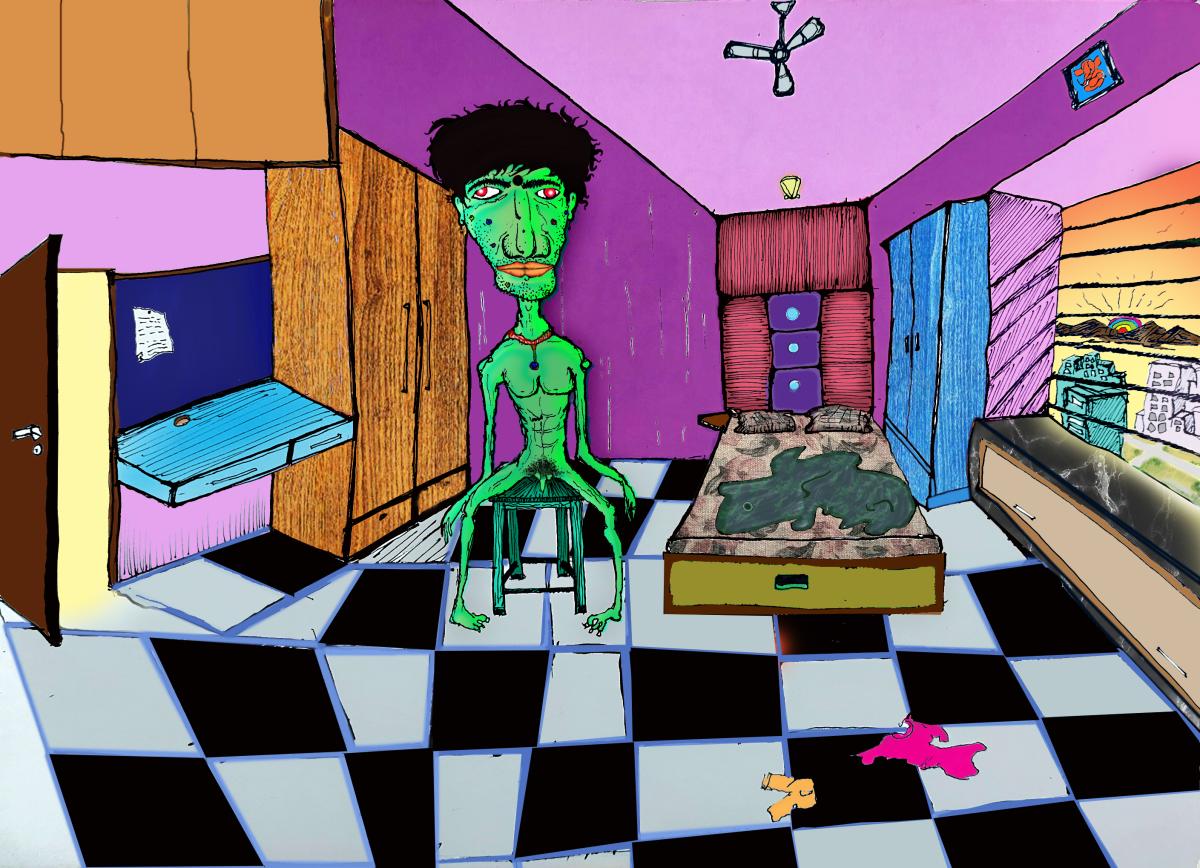

How do you analyze the qualities of a work of art?
When I look at art, the initial sensation I have at first glance is where I feel the depth. Among countless works of art, there is always one that evokes something unique – the story it tells, its deep meaning or even the choice of colors. I always strive to discover the narrative and overarching meaning of the artwork, and when I understand it, That's when it really resonates.
Surprisingly, even the simplest element, like a point, contains the essence of art. This point may evoke a feeling of emptiness or, strangely, make you feel as if that point embodies a part of you. The essence is in simplicity that carries profound depth.
Creating art that is simultaneously simple and profound takes significant time and effort, and that is the beauty of an artist – conveying deep meanings, but direct, through your art. It's in the textures, in the patterns and the way they guide you on the journey within the artwork.
Talk about your projects today…
I find immense inspiration in my personal life experiences, in my lonely moments at home, where I embrace nudity as a symbol of absolute freedom. Listening to the impulses of my mind drives my artistic process – I simply follow everything my mind dictates, allowing her to lead my creative journey.
My artwork encapsulates life in its countless forms – human, animals, insects, plants, mountains and celestial bodies, especially the sun and moon, play significant roles. The sun, unlimited energy source, by and by, with its ethereal beauty, profoundly influence my creations. They symbolize different aspects of life – the nourishing heat of the sun and the mystical allure of the moon.
My creative process often starts spontaneously, with a single line or dot, devoid of preconceived notions. The initial stage unfolds naturally, representing reflections of my past experiences – moments that brought pain or happiness. As I progress to subsequent phases, I delve deeper into the subject, drawing up standards, adding contours and complexities, shaping the narrative that echoes the episodes of my life.
Initially preferring monochromatic themes, I started using color to help viewers better understand and appreciate my artwork. I closely study human nature – observing expressions, actions and the distinct universe of each individual. It's a bittersweet relationship with humanity; although I disdain your selfish tendencies, I also recognize the uniqueness that distinguishes each person.
The vivid dreams I experienced, especially those of lucid nature years ago, provided me with a unique perspective – an introspective view of the inner soul, disconnected from the physical body. These profound encounters significantly influence my art, shaping your depth and introspective nature.
Nature also holds a special place in my heart. I feel the caress of the air on my skin and witness the dance of the trees during storms. Their creative essence surprises me – they provide shelter for countless creatures, including us, and offer their own materials for our homes. The trees, silent providers of oxygen and homes, are a recurring theme in my art.
Every experience, emotion and contemplation I had about life, the humanity, nature and the universe find their expression in my art – a tapestry woven from the threads of my existence and observations.
What is your advice for someone just starting out??
The quest to become a great artist, At my point of view, transcends the search for fame or recognition. It's about embracing the natural flow, create masterpieces and tirelessly hone your art. Immerse yourself in the study of the complexities of nature, explore all facets of life, from favelas to mountains, and understand the symbiotic relationships between beings and their surroundings.
Understanding yourself, understand leaf textures, the anatomy of animals, your pain and your love, it is fundamental. Delve into every detail of life and observe its countless perspectives to inspire your art. Art is an expression of these profound experiences, a reflection of the connection between the artist's soul and the world around him.
Art evolves gradually. At the beginning, your creations may lack depth and detail, looking ordinary, but through consistent practice, Your artwork matures with intricate details, showing notable improvement over time. There will be times when creating art may not feel right, but these breaks can offer invaluable life experiences that will eventually manifest themselves in your art.
Art knows no borders; is an entity that is always fluid and unlimited. Get involved with artistic communities, protect your works of art and remember, Not everyone will appreciate your creations. Smile and move on, because an artist's journey is marked by perseverance and continuous effort.
Refinement takes time. Embrace the journey and don't be discouraged if you haven't reached the level of creating masterpieces yet. Let inspiration come from your surroundings, of nature and experiences, but avoid looking at other people's works of art; can inadvertently influence your style, making it difficult to develop a unique artistic identity.
Experiment with AI technology – use it as an experimentation tool, instead of relying on it to create art. Life will bring many ups and downs, but the joy derived from creating art will guide you. Every detail in the universe is art; study them, learn from them and let these observations fuel your creative expressions.
Remember that a blank canvas with a single dot is art – it can resonate deeply with someone, evoke emotions or encapsulate vastness within emptiness. The essence of art lies in capturing emotions and stories from the environment – the pain, the emotions, the process itself is art. Stay up to date with events, exhibitions and the artistic community. It's a challenging journey, with fierce competition and high costs to display art in galleries, but persist and find ways to make your work visible to the world. Keep creating, keep evolving and never stop creating art.
If you want to leave a message ...
Your body is a canvas, an art form from the depths to the outer surface. Study it, feel it, find your inner soul and witness your connection with nature. Through pain and happiness, Your journey may have ups and downs, But don't stop – keep running, keep working for your art.
Life is challenging, but remember, nothing is impossible. The right time will reveal itself if you invest in art, the universe will reveal its proper place. Always remember, even when you think no one is watching, the nature, the air, the trees and your inner soul are testifying to the depth of your dedication and hard work in forming your art.
About your exhibitions, do you have any comments about them, feelings…
My first exhibition took place during a university event where I presented about 25 works. I received a lot of appreciation for the creativity and uniqueness of my art.
The 25 parts, only 2 were sold at relatively lower prices, but I was genuinely happy that they appreciated my work. Many teachers also showed admiration for my art during the exhibition, what motivated and inspired me to create more.
How would you define your art in one line?
“Art if creature” (“creature” typically refers to animals or creatures, often used informally to describe various living things, especially those found in nature).

Social Media:
Instagram: @artofcritter
Twitter: @ramesh01suthar
…

